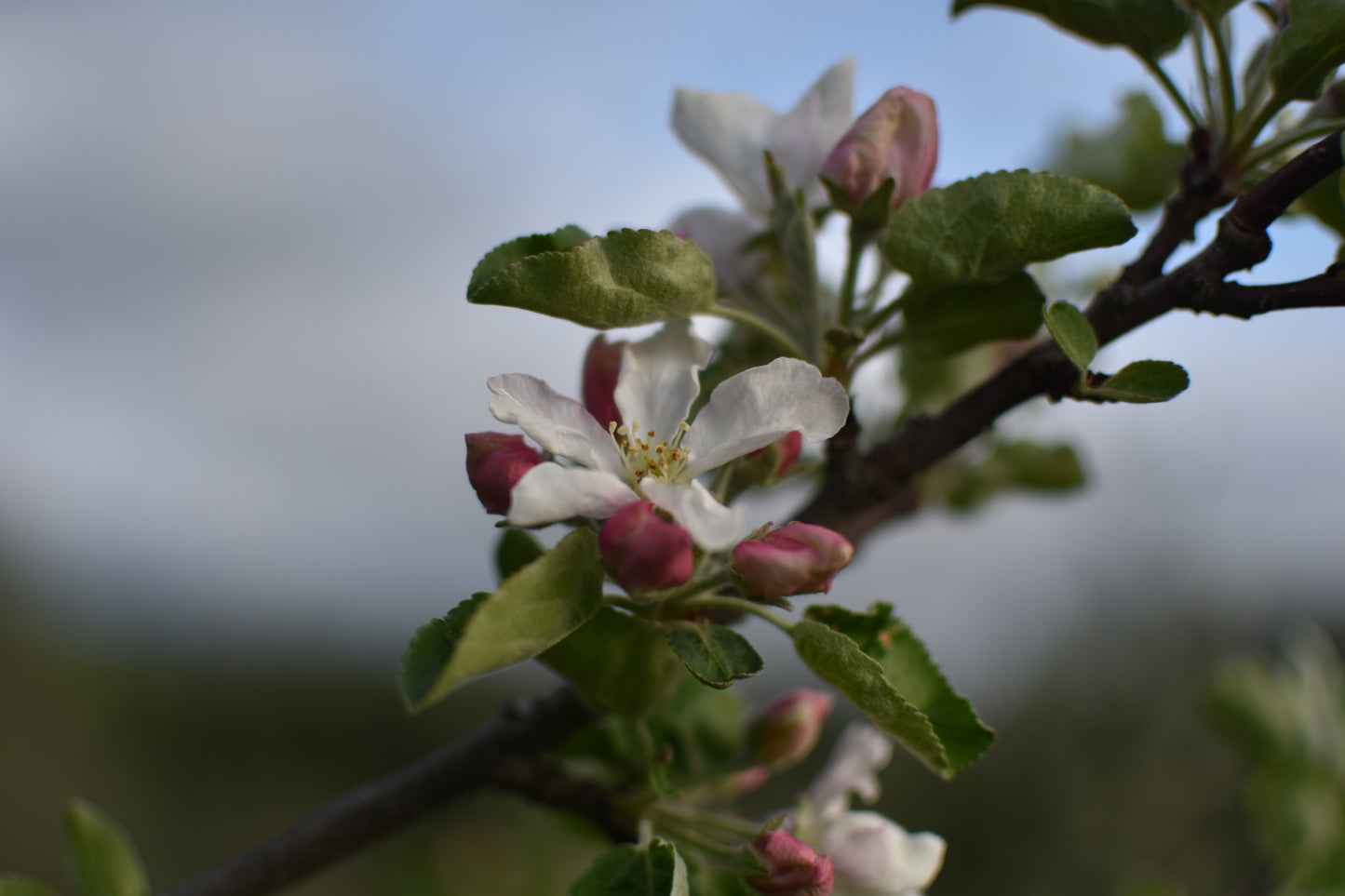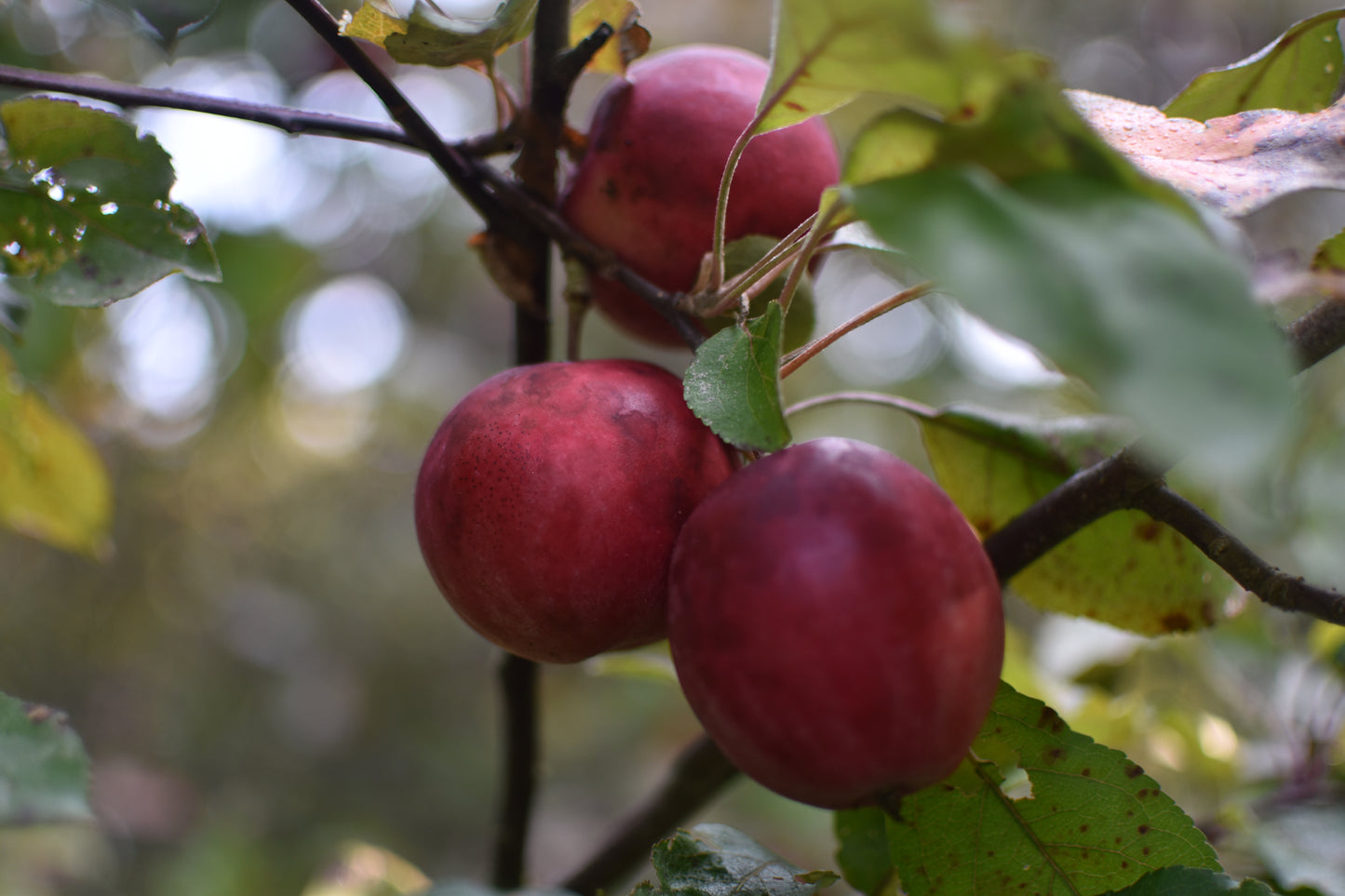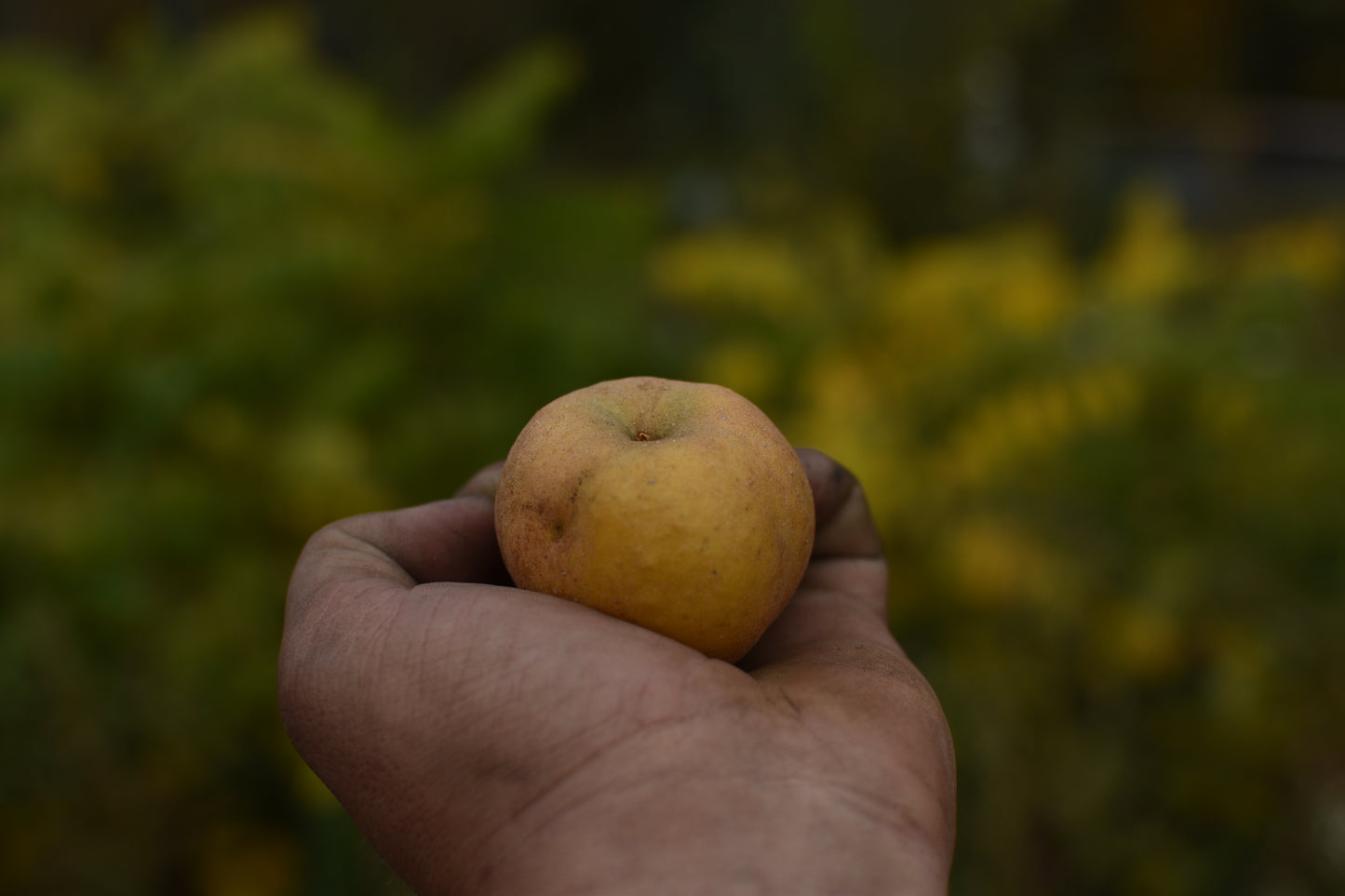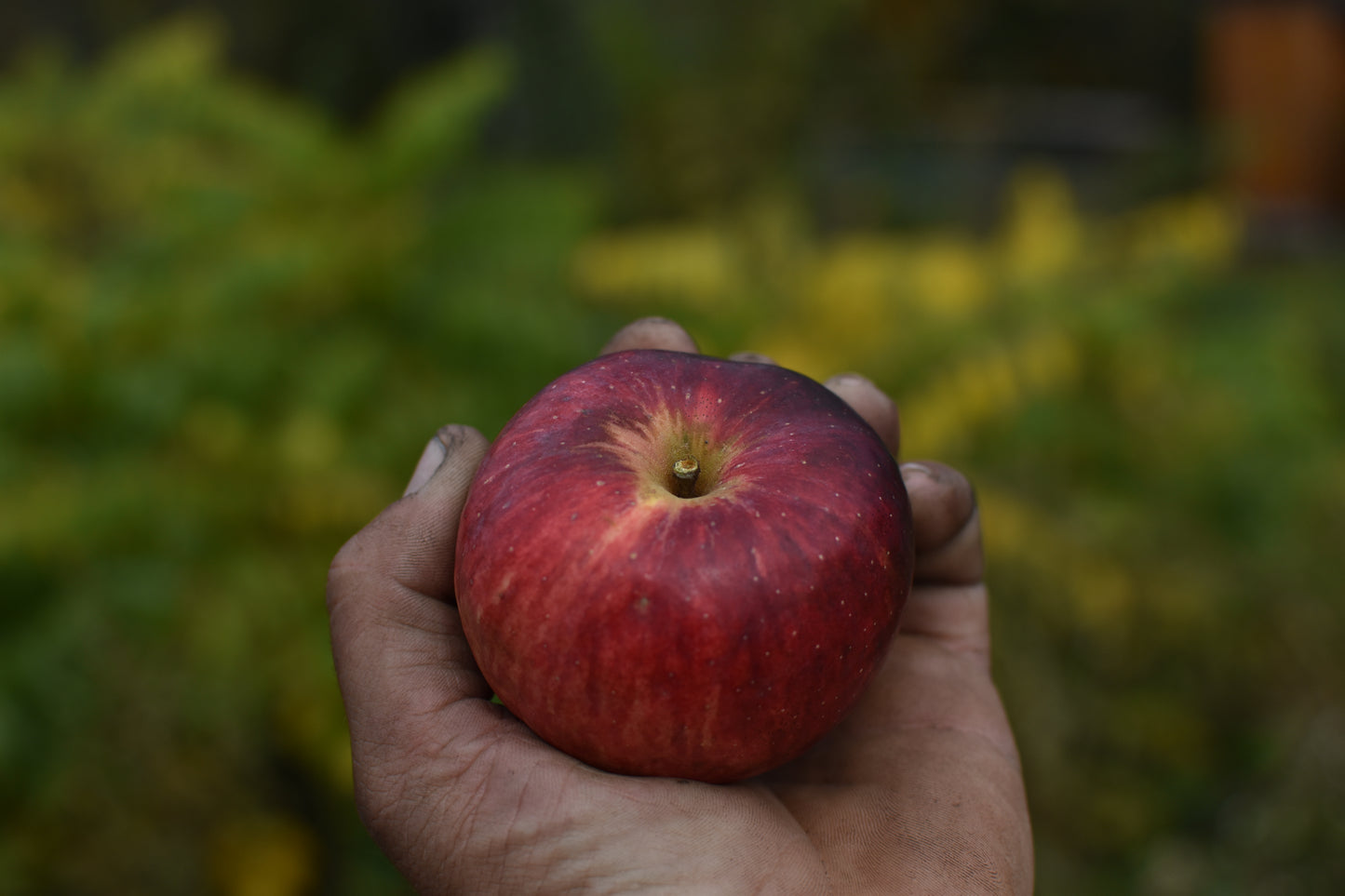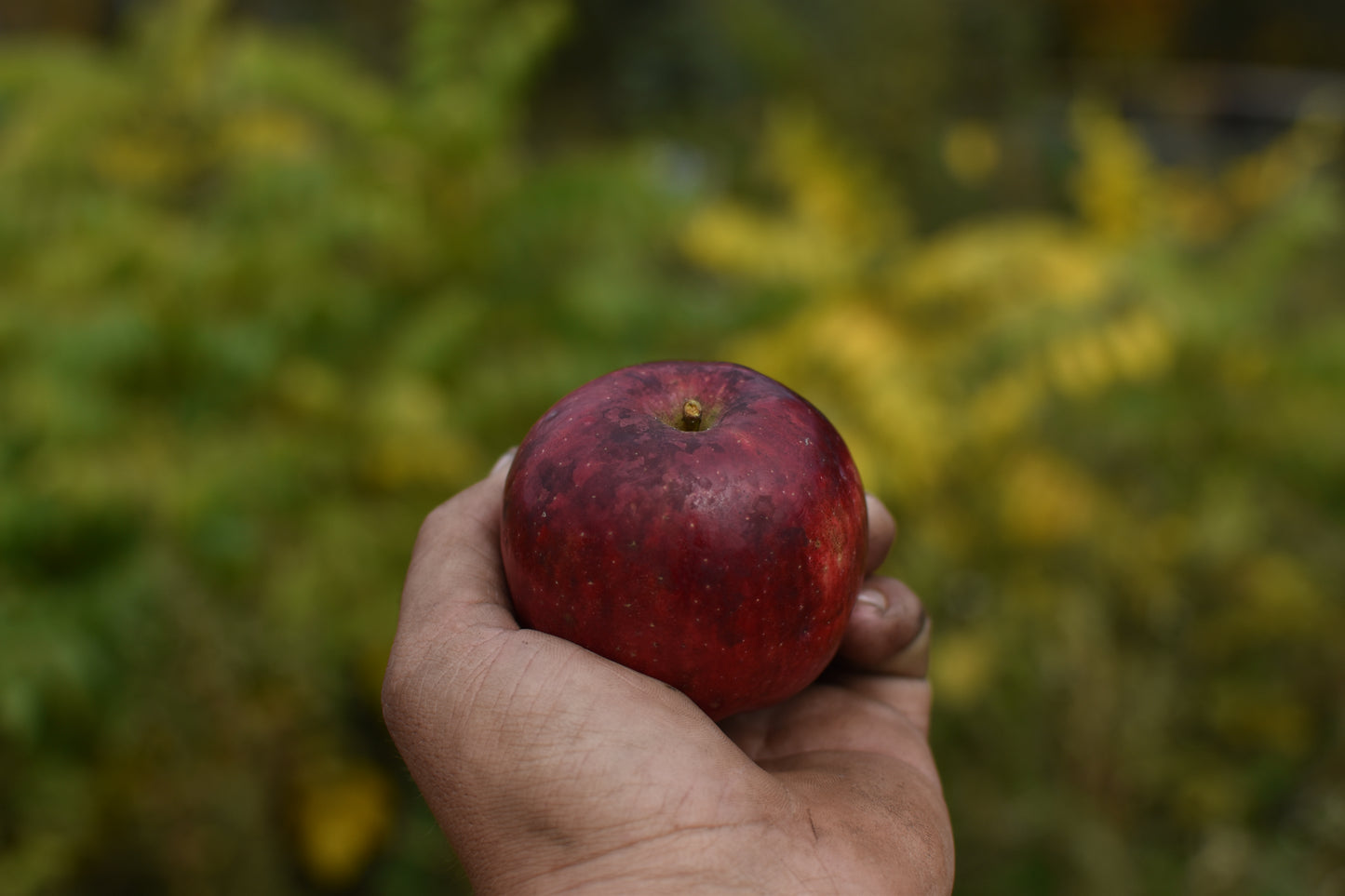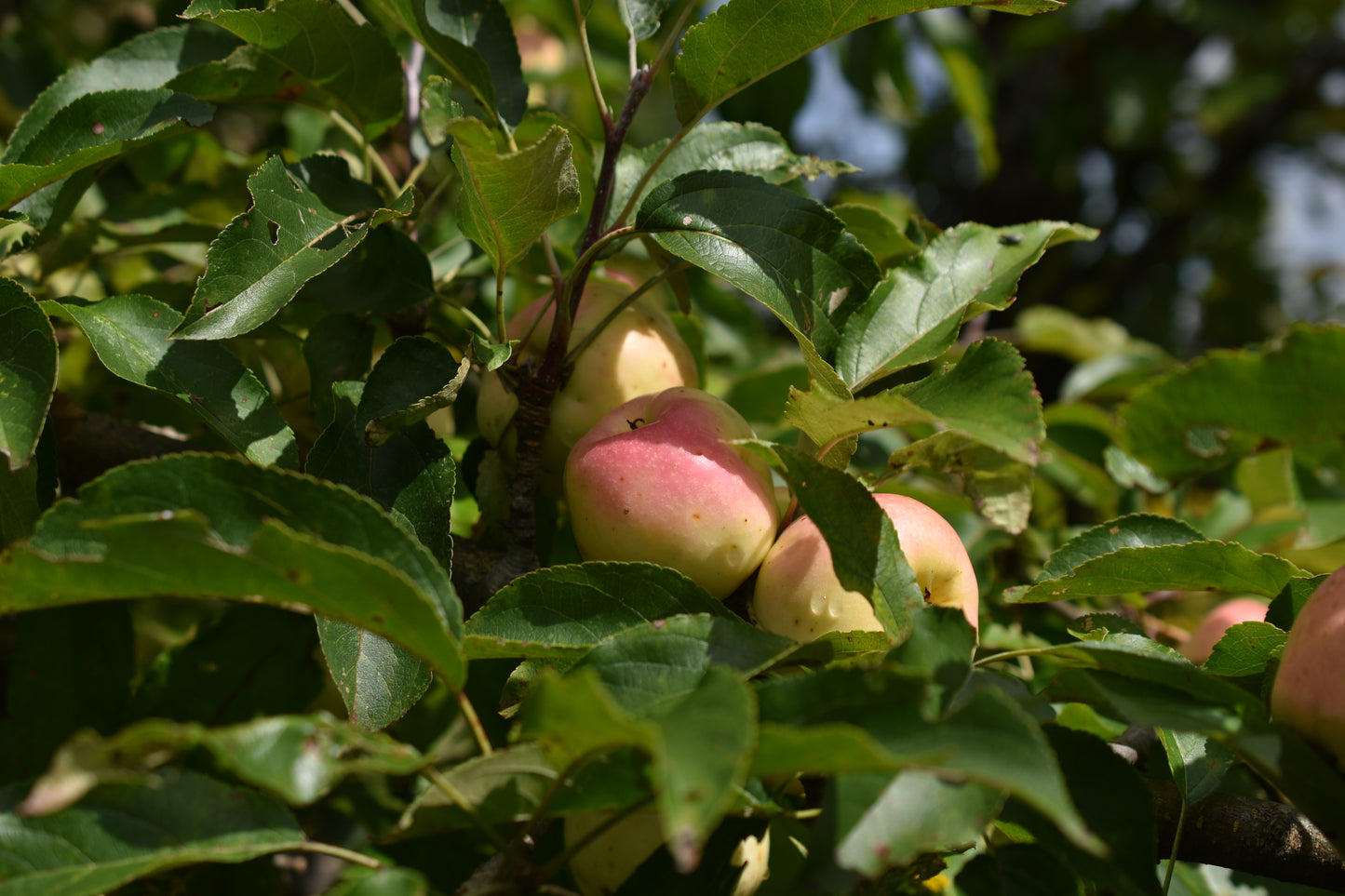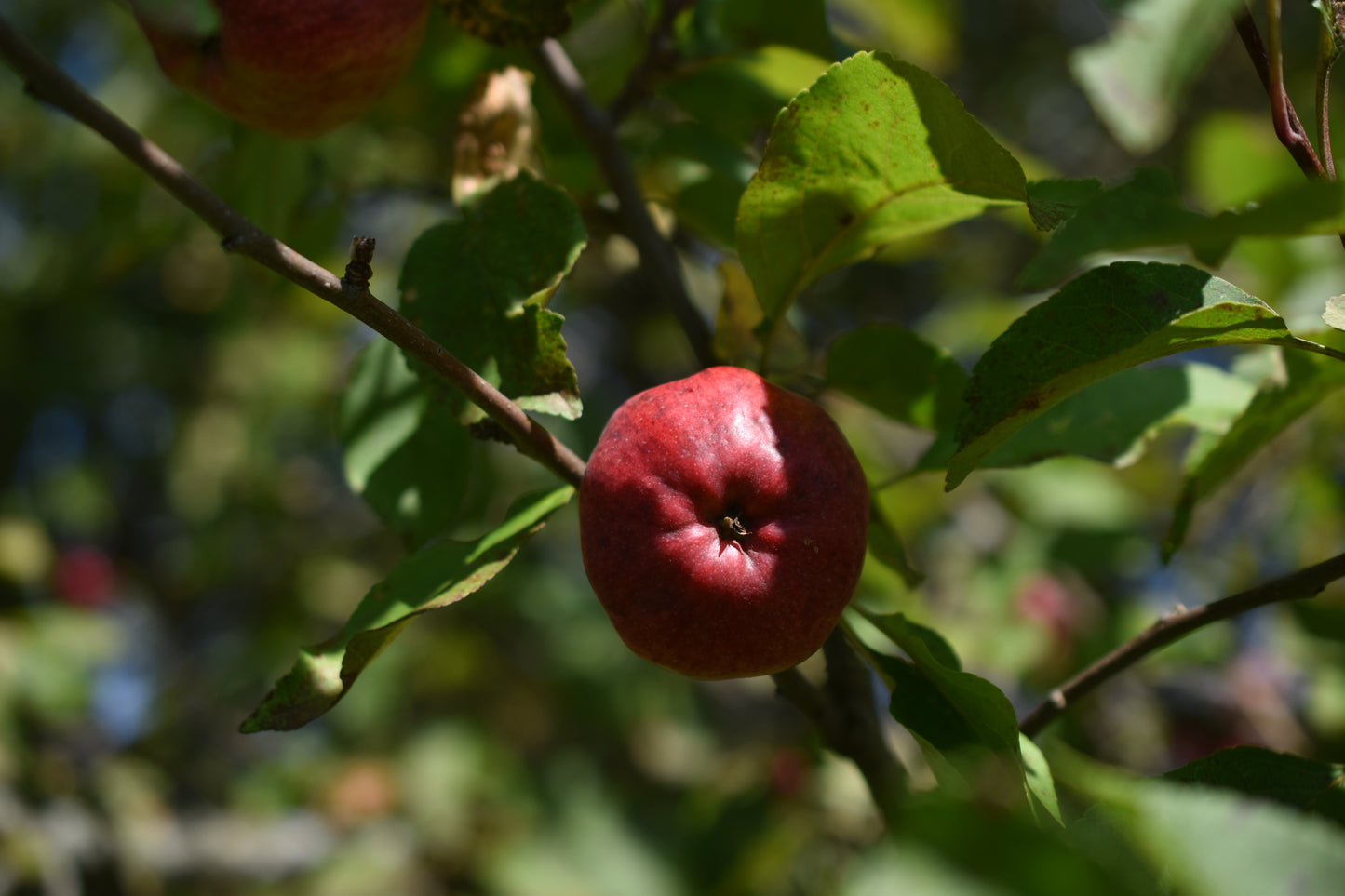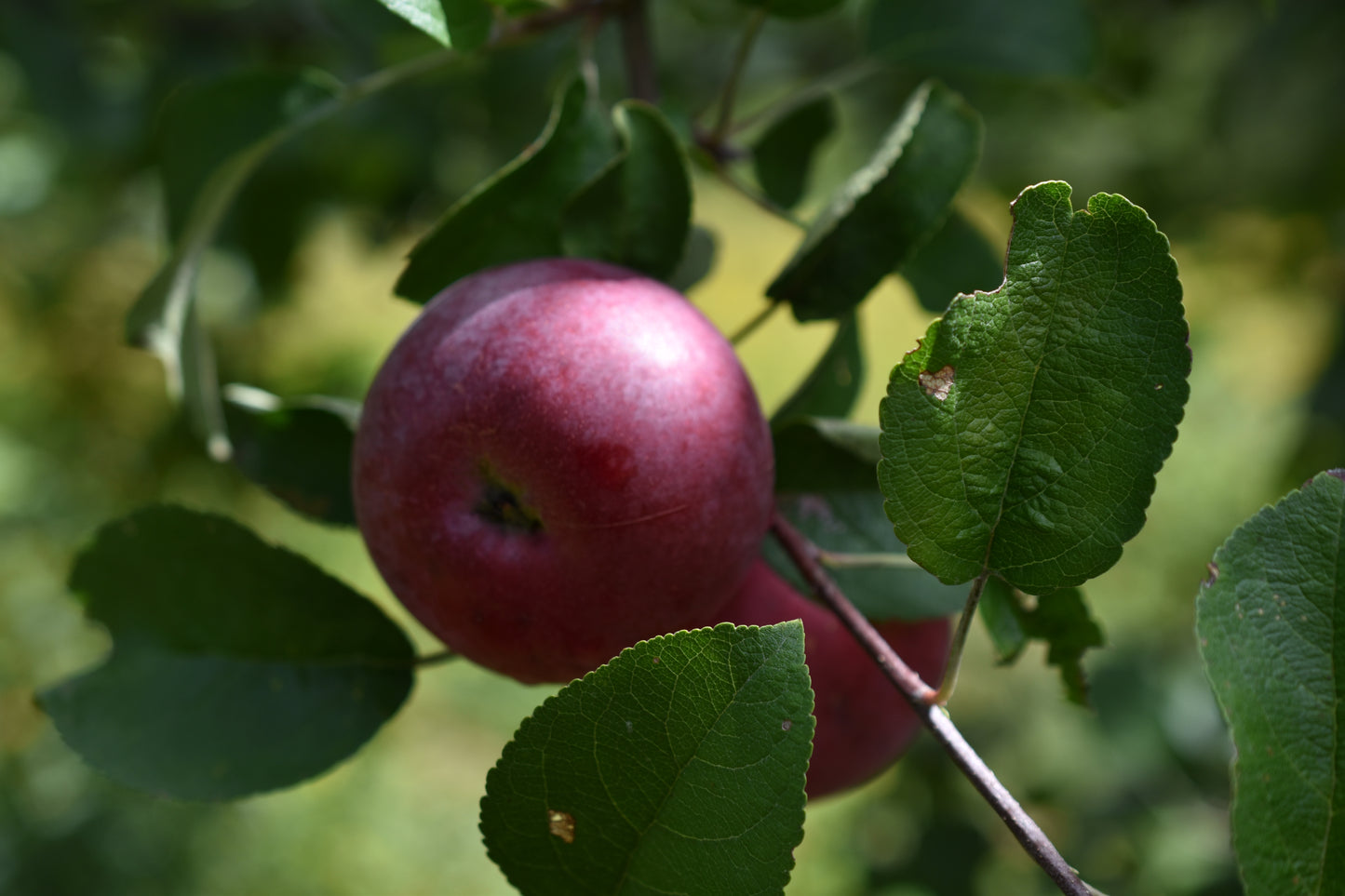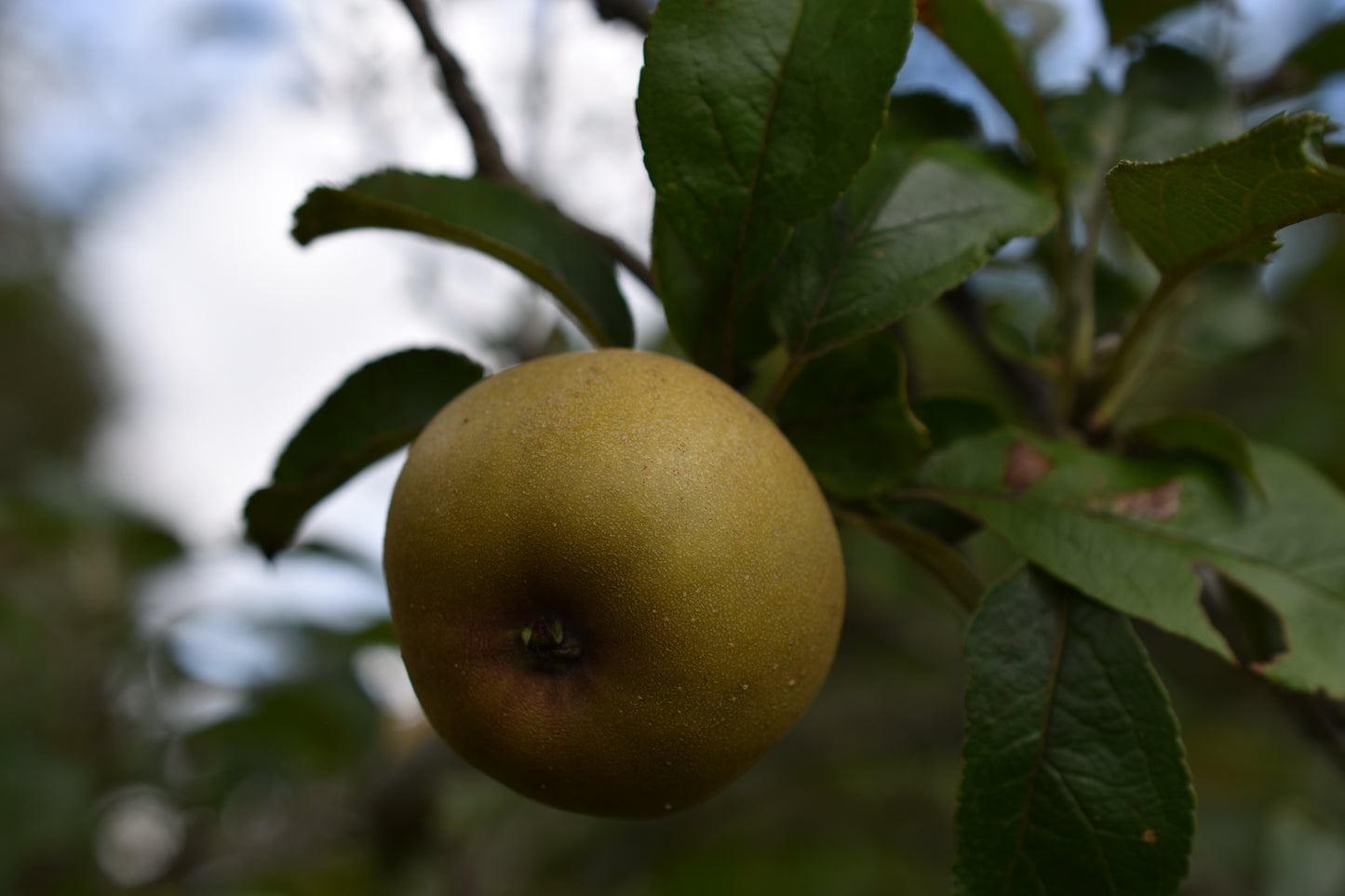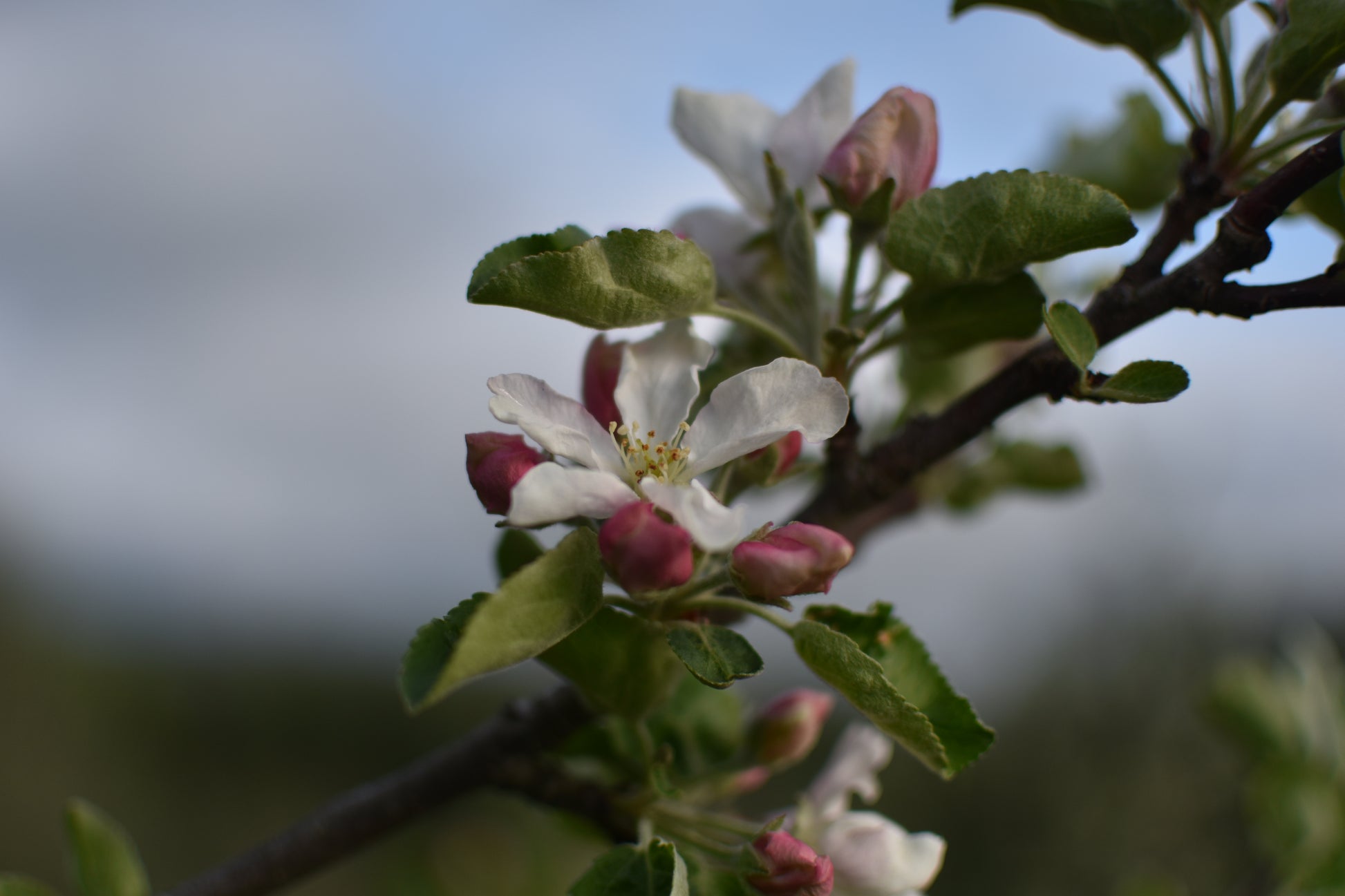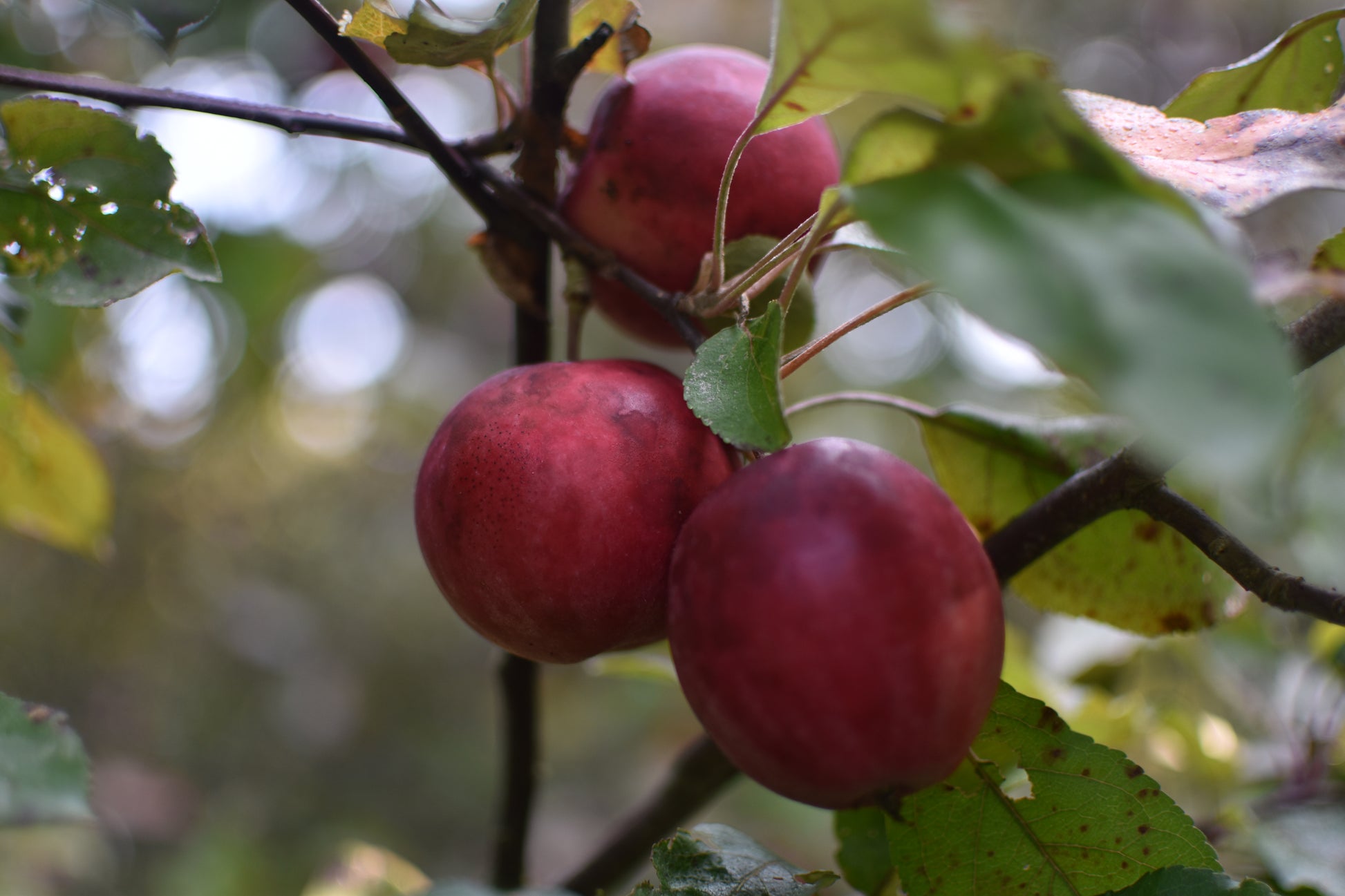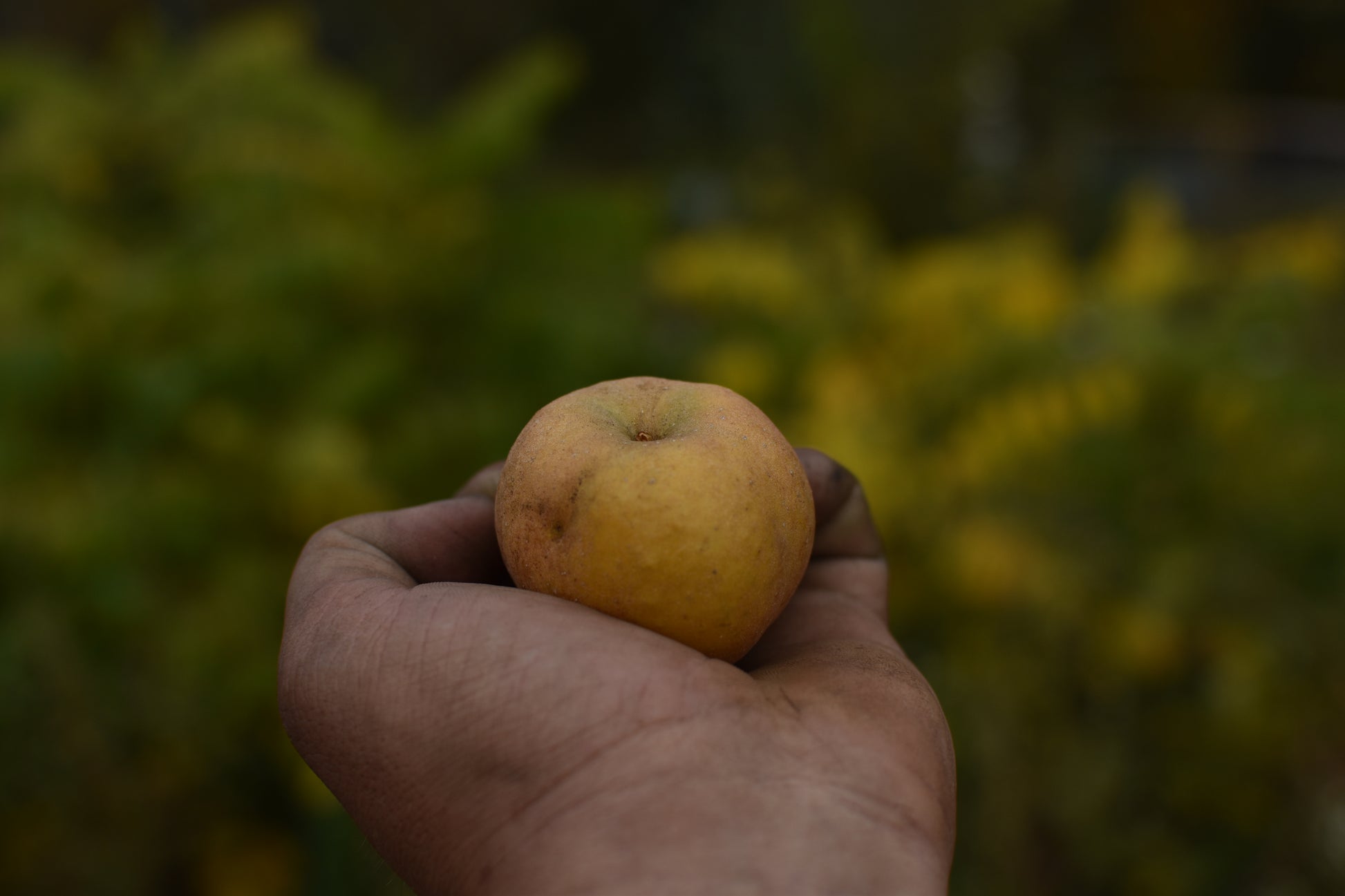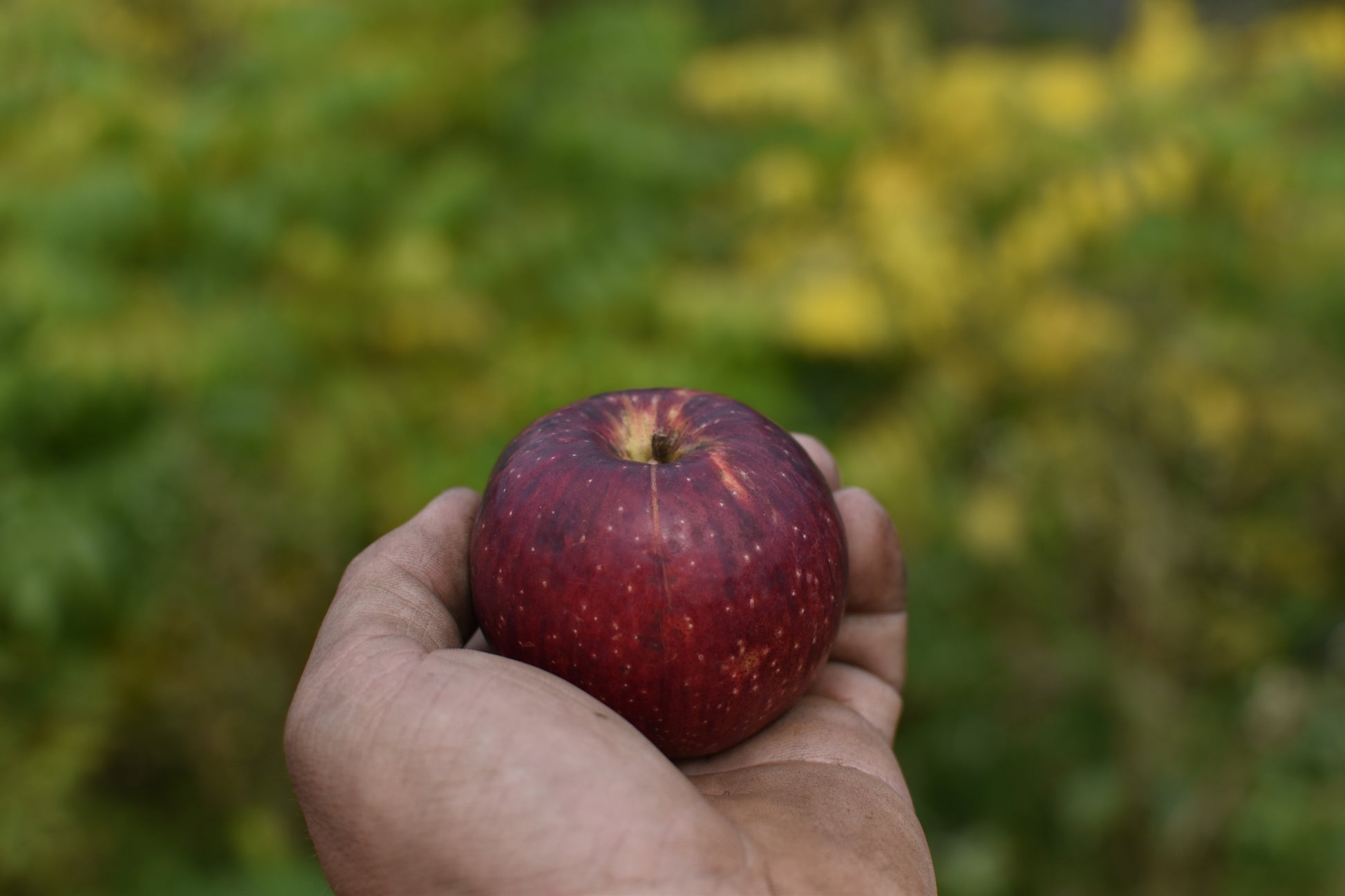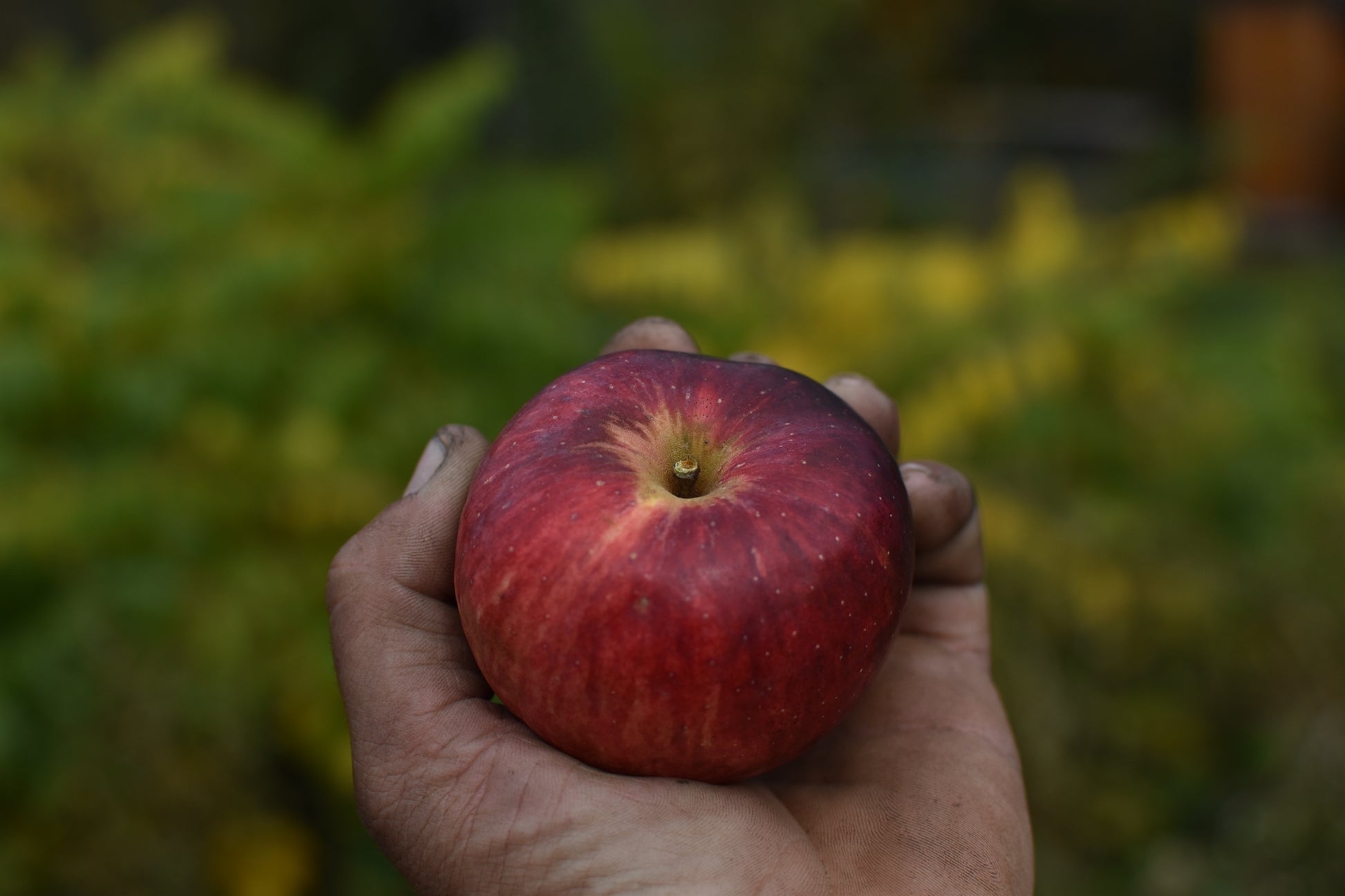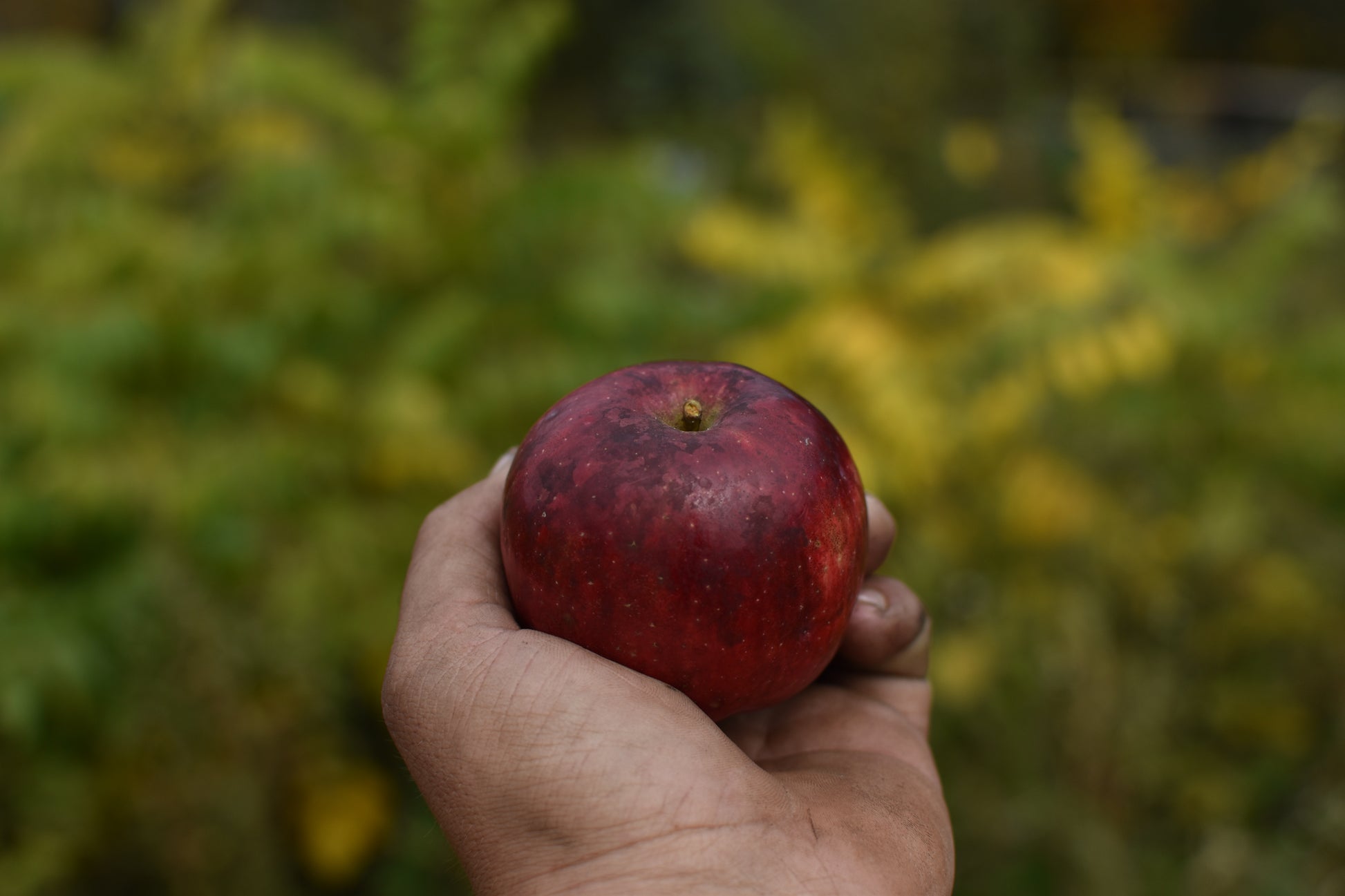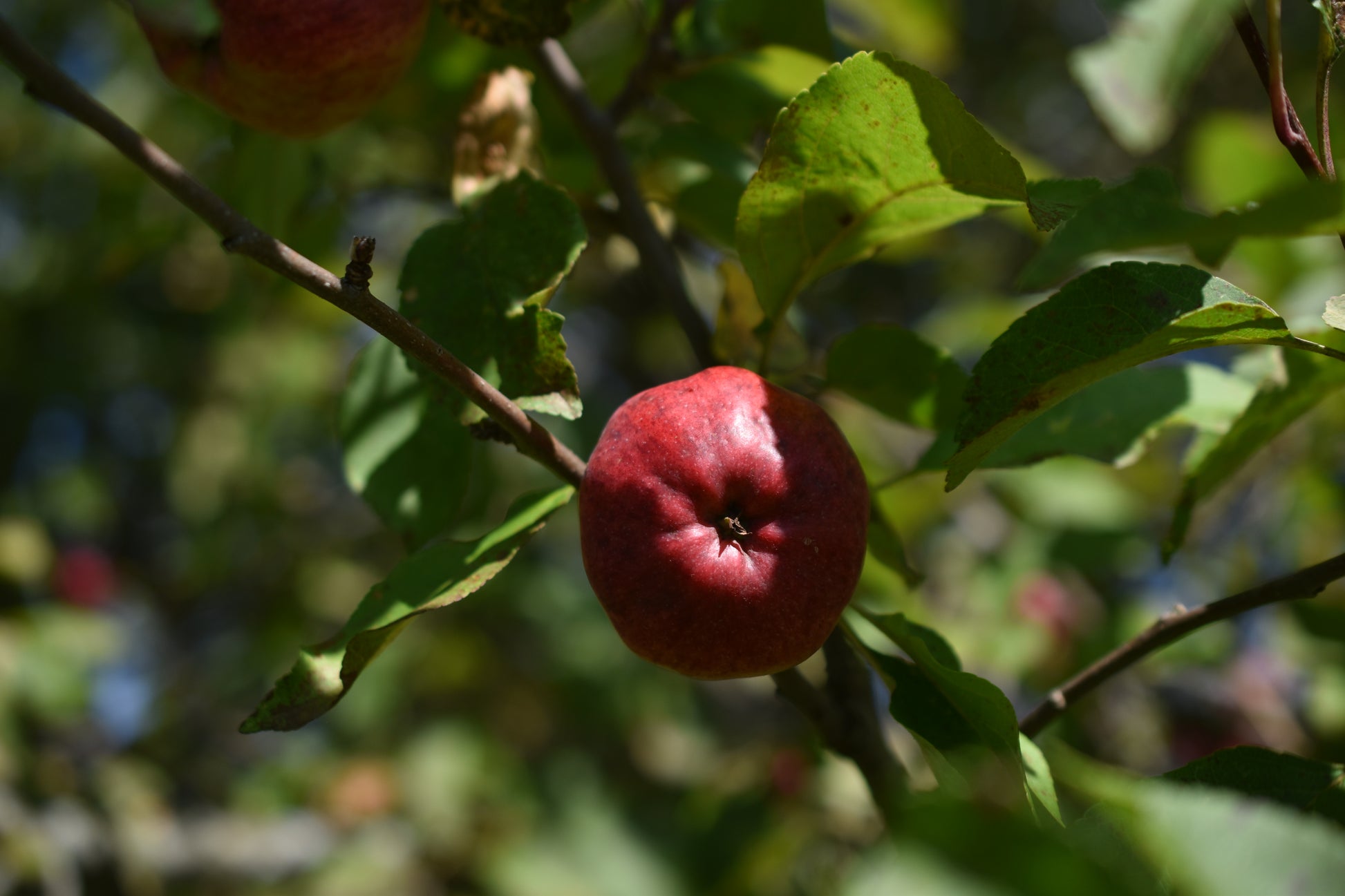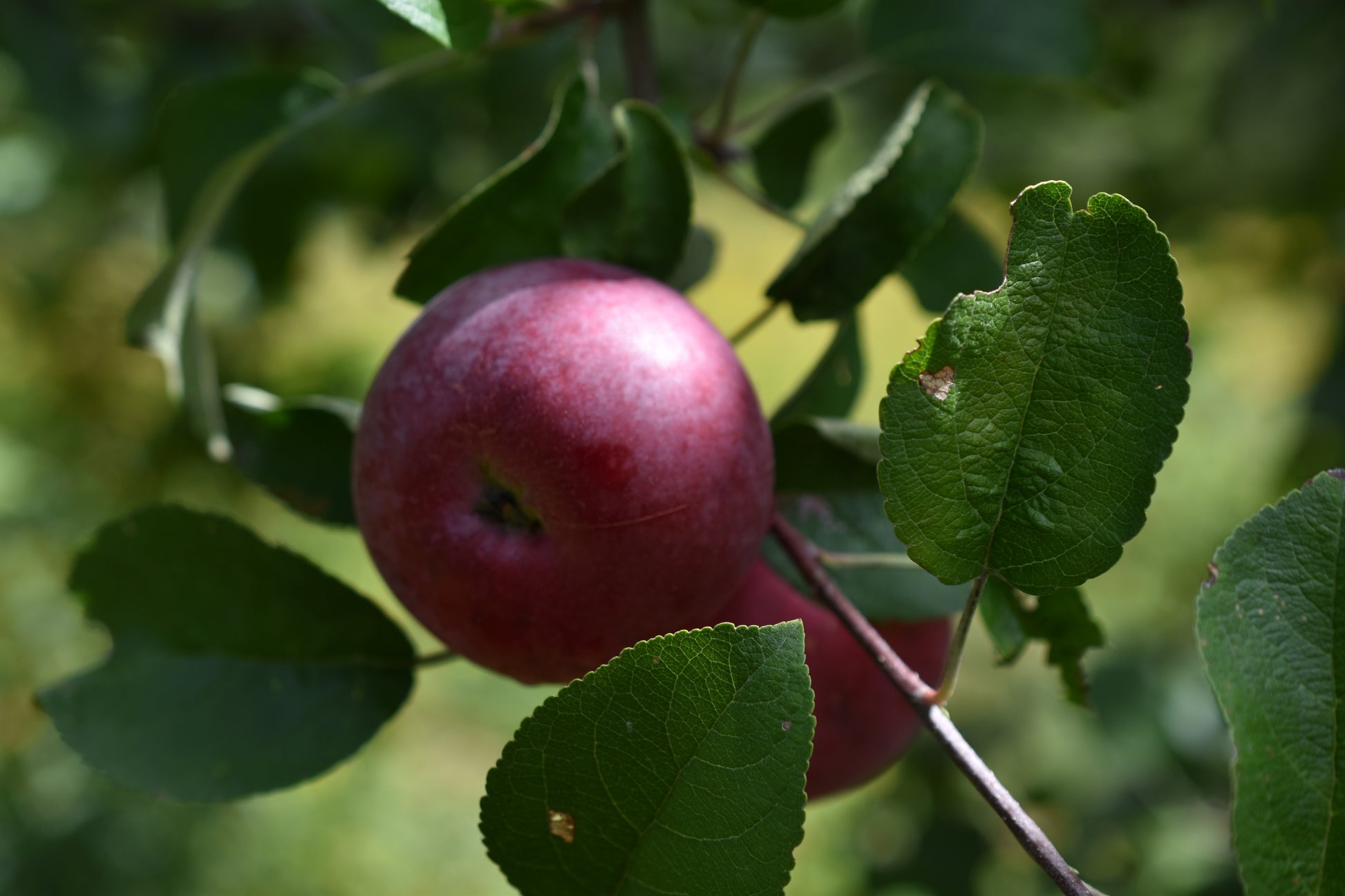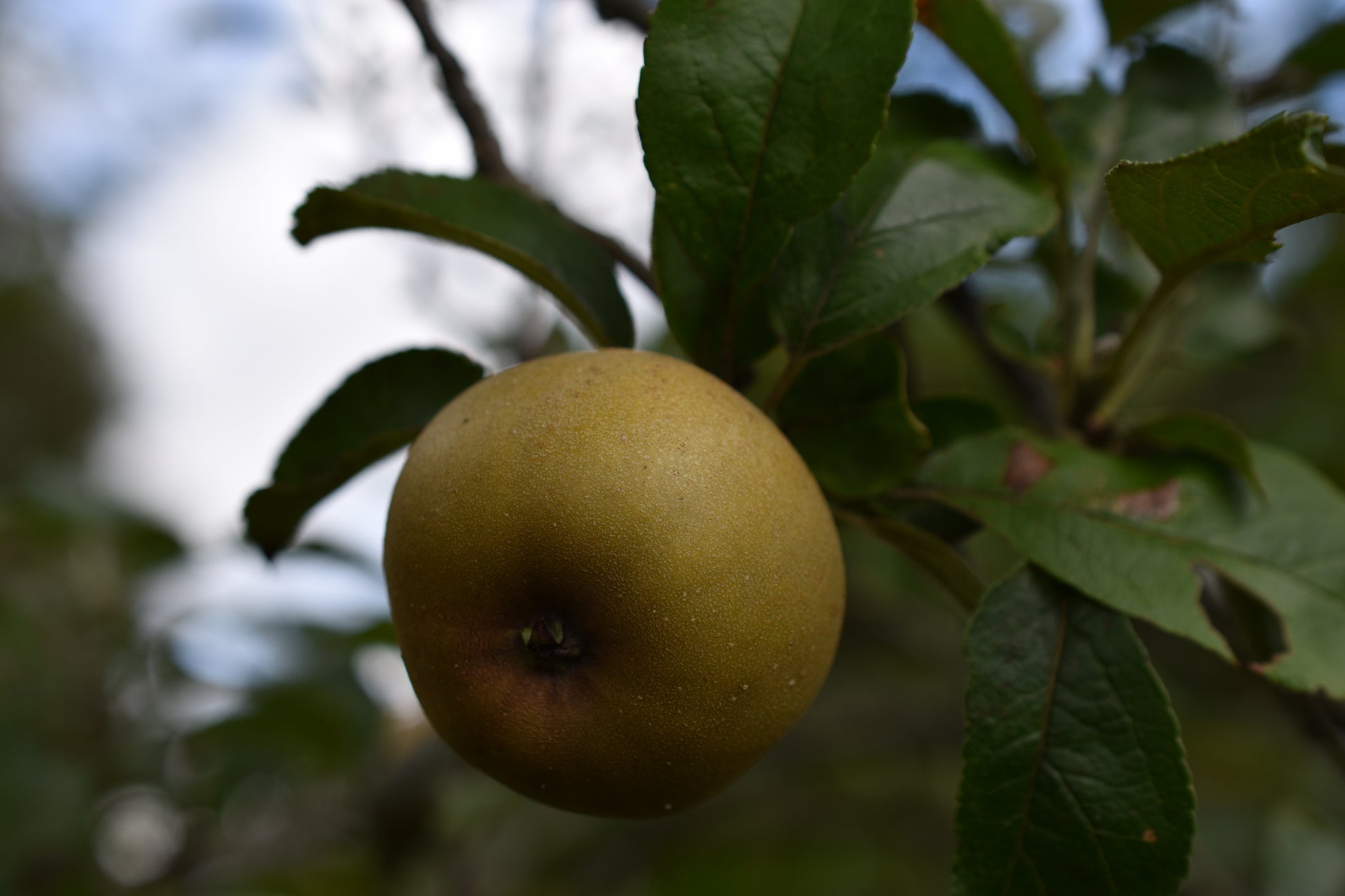La Réfriche Nursery
Apple tree (Malus domestica) - Zone 4
Apple tree (Malus domestica) - Zone 4
Couldn't load pickup availability
Discovery - zone 4b, early
Malus domestica ‘Discovery’ - An early or summer apple variety, this small red apple with yellow streaks and dots has crisp, juicy, sweet flesh and is harvested in August. When ripe in September, the flesh takes on a pinkish hue and a red fruit flavor reminiscent of strawberries. As it is a fairly early fruit, it does not keep very well and is sensitive to damage during handling. It is therefore an apple of choice for juicing, compotes, and eating fresh at the very beginning of the season. Its fruit is fairly resistant to scab.
Fall Red - zone 2, mid-season
Malus domestica ‘Fall Red’ - Its distinctive feature is that it produces red apples with a balance of tartness and sweetness that are crisp and juicy. It is best eaten fresh when harvested, cooked, or stored in a cool place, made into compote or juice. Another advantage of this variety is that it produces a hardy tree with foliage that is resistant to bacterial blight. Harvesting takes place from mid to late September.
Freedom - zone 3a, mid-season
Malus domestica ‘Freedom’ - A mid-season apple variety, ‘Freedom’ is harvested from late September to October. Its deep red apples are ideal for eating fresh or juicing. Its flesh is crisp and juicy, with a flavor that is half sweet, half tart. It stores very well in cold storage and is resistant to scab and fire blight.
Golden Russet - zone 3b, late
Malus domestica ‘Golden Russet’ - An old variety with crisp flesh and a sweet, fragrant taste that is sometimes reminiscent of pear. Its thick skin protects the apple from insects and disease. Some people dislike the apple's skin, while others love it. It is excellent eaten fresh, in pies, and for making cider. It is slightly susceptible to bacterial blight and scab. It is the latest apple in our orchard and is harvested from the third week of October to the first week of November.
Honeycrisp - zone 3, late
Malus domestica ‘Honeycrisp’ - Crisp, juicy apple with a honey flavor that stores well. The tree is susceptible to fire blight. In environments where there is little pressure from this bacterium, it can be controlled by pruning appropriately. It also has some resistance to scab.
Liberty - zone 3, late
Malus domestica ‘Liberty’ - An excellent variety for apple desserts, ‘Liberty’ is a late apple that is harvested in mid-October and can also be made into compote or cider. Although it is already very good to eat fresh from the tree, its semi-sweet, semi-tart flavor, similar to a Mcintosh but slightly less acidic, improves with storage. After the first frost, its taste becomes sweeter. Once picked, it will keep for several months in cold storage.
Manitoba - Zone 3, mid-season
Malus domestica ‘Manitoba’ - A variety of apple mainly known for its hardiness and disease resistance, ‘Manitoba’ produces apples that are semi-sweet and semi-tart, slightly more acidic than average. Its large, red, crunchy apples are very good for eating fresh or juicing. This tree is ideal for people looking for a low-maintenance apple tree.
Novamac - Zone 4, mid-season
Malus domestica ‘Novamac’ - This cultivar, a cross between the McIntosh apple, has retained characteristics very similar to the McIntosh in terms of size and taste, but is also more resistant to scab. It is best eaten fresh, but also makes excellent pies, crumbles, and applesauce.
Paulared - zone 4, mid-season
Malus domestica ‘Paulared’ - A mid-season variety, ‘Paulared’ apples are harvested from late August to early September, depending on the region. These medium to large apples are crisp and juicy. They have a predominantly sweet-tart flavor with hints of wine and wild strawberries. The tree is very productive but tends to alternate its production every other year.
Yellow Summer Apple - Zone 4, early
Malus domestica ‘Défriche d'été’ -
Red Free - zone 5, early
Malus domestica ‘Red Free’ - An early variety that produces its first apples around the end of August, ‘Red Free’ is the ideal variety for the novice gardener who wants to eat freshly picked apples from a disease-resistant tree. Its gradual ripening allows for a longer harvest period so you can enjoy these sweet, juicy apples with hints of strawberry. Its only commercial drawback is its short shelf life. Don't expect the apples to keep for more than a month in the refrigerator.
Richelieu - zone 4, mid-season
Malus domestica ‘Richelieu’ - A commercial apple variety particularly known for its resistance to scab and fire blight, ‘Richelieu’ is a mid-season apple that is harvested in mid-September. Its apples are crisp and juicy with a predominantly sweet taste and a hint of acidity, giving them a flavor similar to Lobo apples. They can be stored in a cool, humid environment for about three months. This variety is moderately susceptible to juniper rust.
** Réfriche apple trees are wild apple trees currently being evaluated at the nursery. We offer them for those who are curious. **
Réfriche #1 - zone 4, mid-season
Malus domestica ‘Réfriche #1’ - This apple comes from a wild tree on our farm. It produces large apples with thin skin, crisp flesh, low juice content, and a slight acidity. It is the favorite apple of the farm's former owners.
Réfriche #2 - zone 4, early variety
Malus domestica ‘Réfriche #2’ - This apple comes from our second favorite tree. The tree was planted closer to our farm building by the previous owners. The characteristics of its apples are not found in any other tree on our farm. This apple has thin skin, crisp, very juicy flesh, and the sweet and slightly tart taste of apple juice. During the first week of ripening in early September, this apple is delicious eaten as is. Then, when it is ripe for juicing, it develops a slightly sparkling taste. Although it is very good fresh, we prefer to use it for making juice, compotes, and cider.
Réfriche #3 - zone 4, late
Malus domestica ‘Réfriche #3’ - This apple comes from our favorite tree in the orchard planted by the previous owners of our farm. We don't know the original cultivar of the tree, but it produces an abundance of sweet, thin-skinned apples with crisp, juicy flesh reminiscent of Cortland. The tree produces abundantly year after year and is slightly susceptible to scab. That said, most of its apples remain intact. They are very good to eat fresh, in pies, and in compotes. It is the second latest apple in our orchard. It is harvested around the end of October.
Réfriche #4 - zone 4, mid-season
Malus domestica ‘Réfriche #4’ - This cultivar, a cross between the McIntosh apple, has retained characteristics very similar to the McIntosh in terms of size and taste, but is also more resistant to scab. It is best eaten fresh, but also makes excellent pies, crumbles, and applesauce.
Saint-Laurent d'hiver - zone 4, late
Malus domestica ‘Saint-Laurent d'hiver’ - A heritage apple variety, some people appreciate it for its flavor, which reminds them of their youth. This late apple is less firm than contemporary commercial apples. It therefore has a shorter shelf life.
Mystery
Malus domestica spp. - A collection of apple trees of varieties included among those presented above. However, each apple tree remains a mystery, revealing the identity of its apple variety only once it is well established in your garden.
Biotope
Biotope
Apple trees should be planted in deep (at least 65 cm), well-drained soil with a slightly acid pH (6.5) and full sun exposure.
Wood
Wood
Apple wood is dense, hard and heavy. Its fine grain enables the precise woodworking required for kitchen utensils. It is also widely used for smoking food.
Size and shape
Size and shape
At present, all the apple trees we produce are full-sized and long-lived. Standard apple trees, with a more established root system, will offer greater resilience in the face of drought episodes, which will become more frequent as a result of climate change.
At maturity, these apple trees will be up to 6 m tall and 4.5 m wide. We recommend spacing them 10 m apart.
The size and growth habit of apple trees varies according to the individual grafted. While waiting for our detailed data sheets on each of the apple trees we offer, we recommend you carry out an internet search.
Pollination
Pollination
Although the Dolgo crabapple is self-fertile, all apple trees currently available are self-sterile, meaning that two different trees with overlapping blossoms are required to produce fruit. To facilitate pollination of your apple trees, we recommend either two different apple trees of the same season or one apple tree with the Dolgo crabapple tree.
Source
Source
Our apple trees are produced entirely at the La Réfriche nursery. Harvesting seeds from our orchard, producing rootstocks, grafting and monitoring growth is a minimum two-year process. We're proud to offer you our meticulously crafted apple trees.
Share
